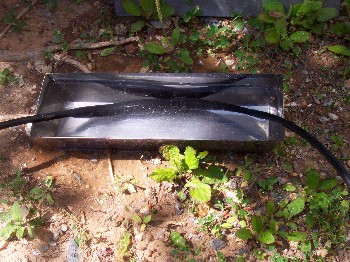
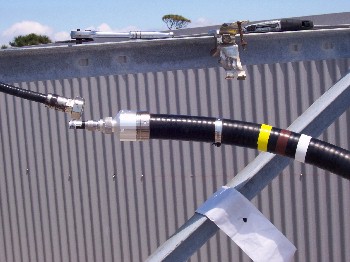
The victim in this demonstration is RG-8 coax.
*Sealing Coaxial Connections*
Some folks will seal up coaxial connections with vinyl electrical tape and call it good. Well, it isn't. It will work for a short time, but water will penetrate it and get in to the connection and possibly in to the coax. Here's how to do it right. How sure am I this works? Well, here is the connection submerged in a pan of water. In the real world this is how we seal up connections on commercial gear.


The victim in this demonstration is RG-8 coax.
Start off by making sure the connection is tight. Then use vinyl electrical tape and wrap from about 2" back from the connector chassis to the coax jacket. This first layer is a "courtesy layer". It has minimal sealing properties. It will allow you to be able to remove the sealing rubber that goes on next. If you don't use a first layer, good luck trying to remove the sealing rubber after it has sat in the sun for awhile and adhered to the connectors.
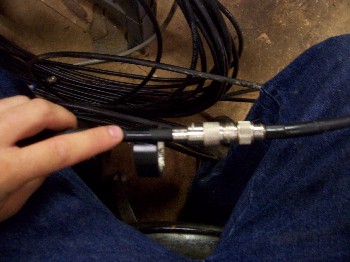
Starting courtesy layer
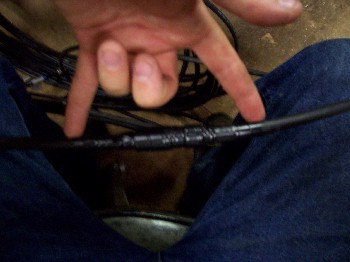
Done
Next we use Butyl rubber which is soft, stretchy and moldable. This is what will do the sealing.
(NOTE: On larger transmission line we wrap the butyl just like the vinyl tape and then mold it. For this small coax this technique will make a much neater job.
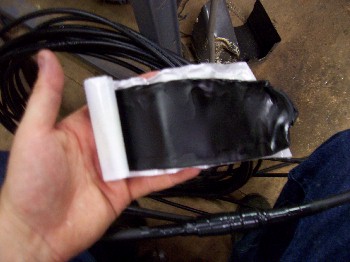
Butyl
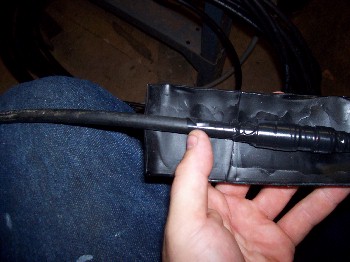
Ready to wrap
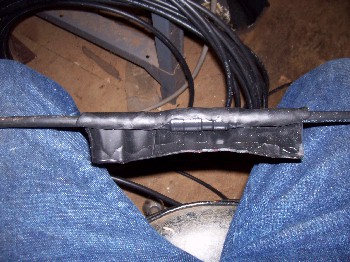
Stretch as you go
The Butyl extends past either end of the courtesy layer by about 1". This allows it to seal to the coax jacket.
As you start wrapping it keep it tight. Once it's wrapped work it with your hands to get high spots pushed down and mold it in to a nice football shape. Be sure to mold both ends on to the jacket. You should end up with this. The ends should be tapered down to the coax jacket, this makes for a much nicer looking job and ease of applying tape.
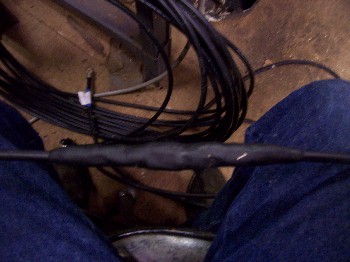
When applying more vinyl electrical tape, wrap it straight, not at an angle. An angle will cause creases in the tape. Be sure to overlap the tape by about half the width. If you have wider tape, you can use that for this layer, I just didn't happen to have any handy.
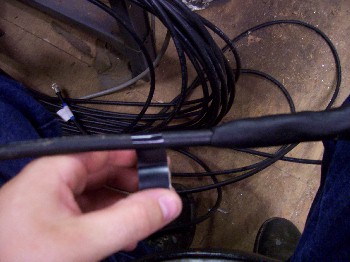
Right
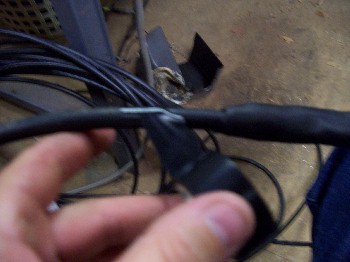
Wrong
Extend a couple of inches beyond either end of the Butyl. In the sun it'll soften up and try to ooze so this will contain it. Once the first layer is done, cut the tape with a knife, don't pull it to break it. Then at that end, start again and wrap in the opposite direction. Cut with a knife also.
So you should have a courtesy layer, butyl layer and then two layers of tape.
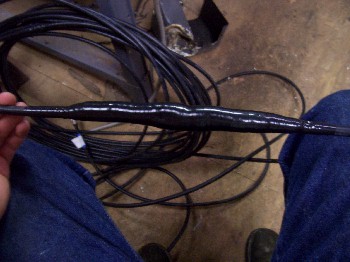
Purdy, huh?
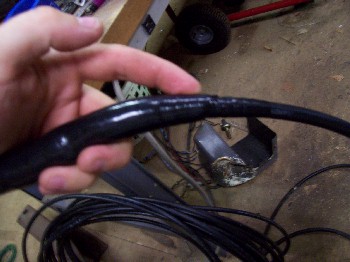
Notice the gentle taper
If I wanted to take the time, I could've used smaller butyl pieces and molded them in to get the low spots out.
Now your coax is sealed up and ready to go.
There's a separate article showing how to remove the seal.
www.alpharubicon.com
All materials at this site not otherwise credited are Copyright © 1996 - 2008 Trip Williams. All rights reserved. May be reproduced for personal use only. Use of any material contained herein is subject to stated terms or written permission.